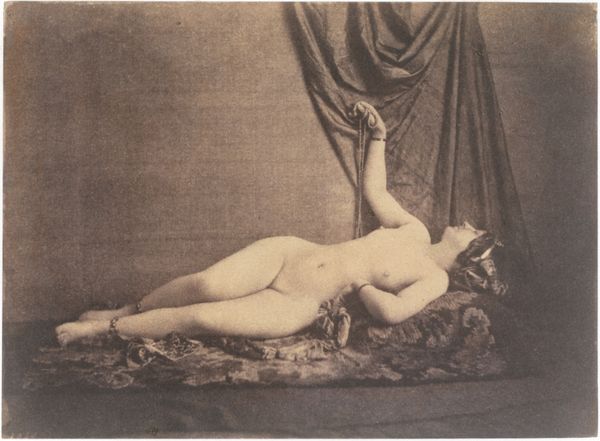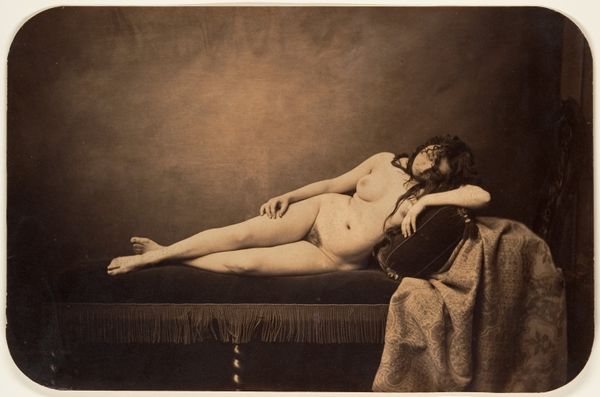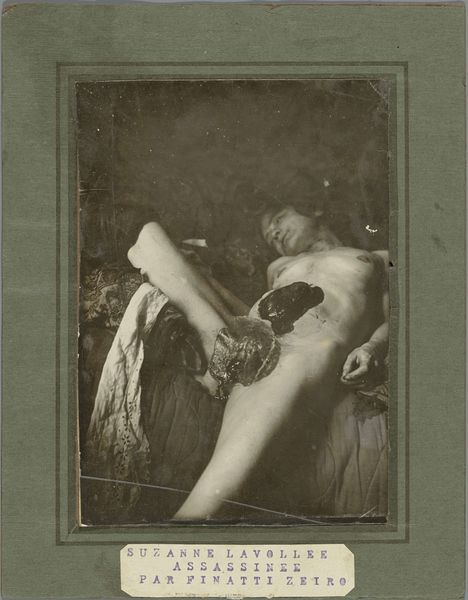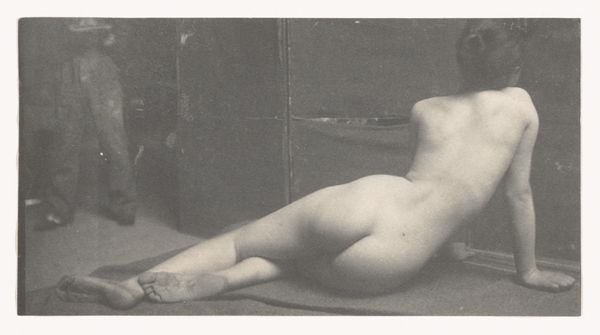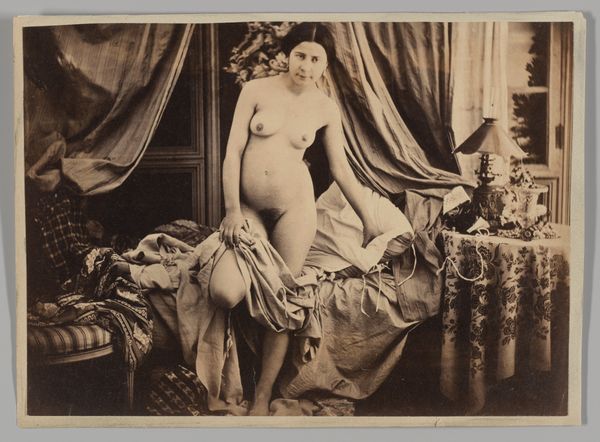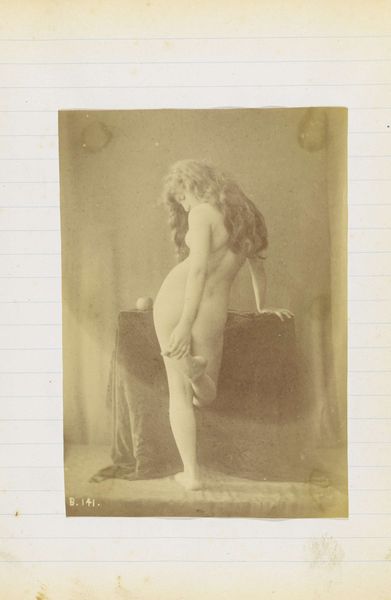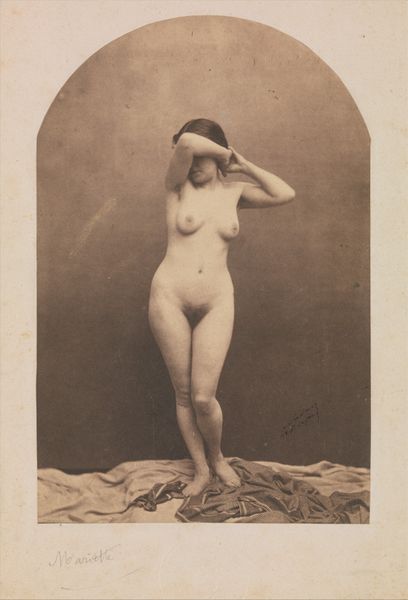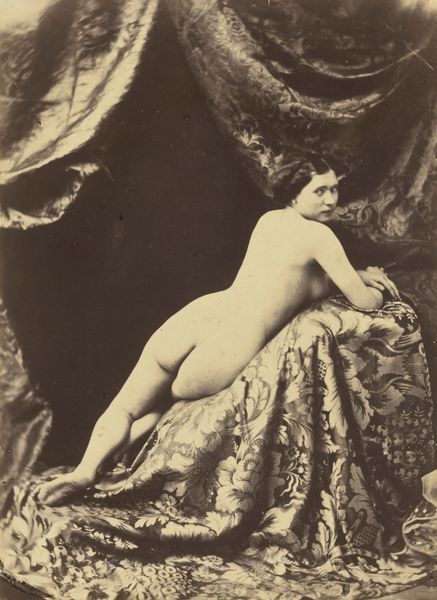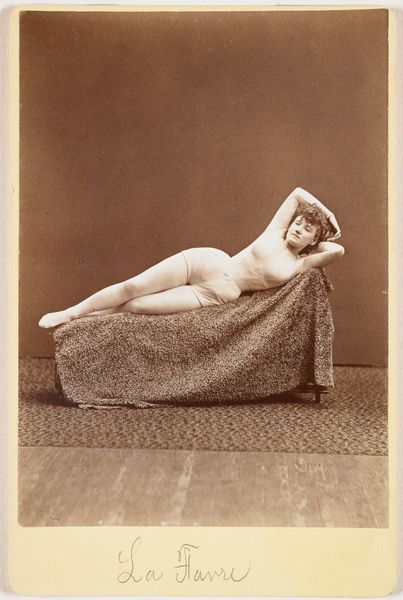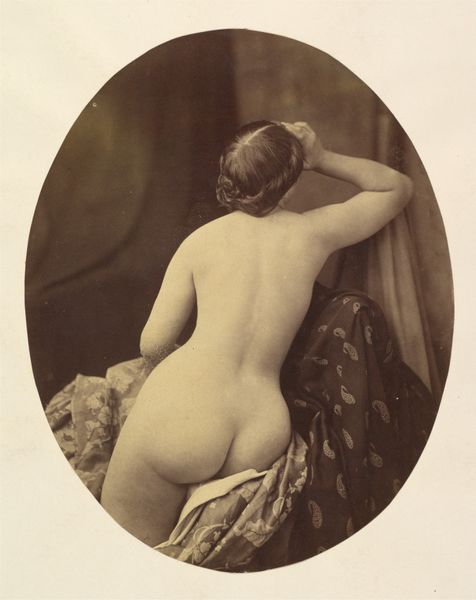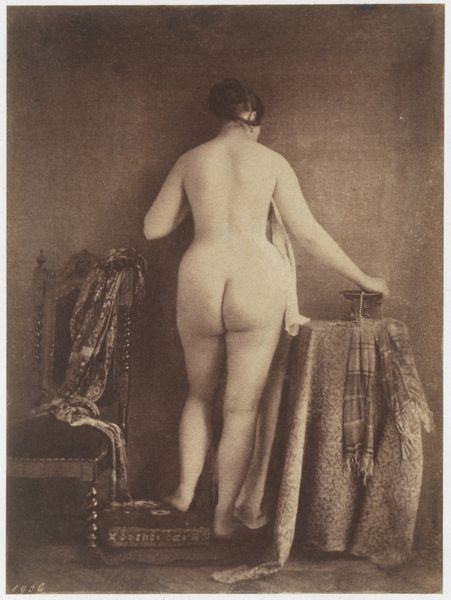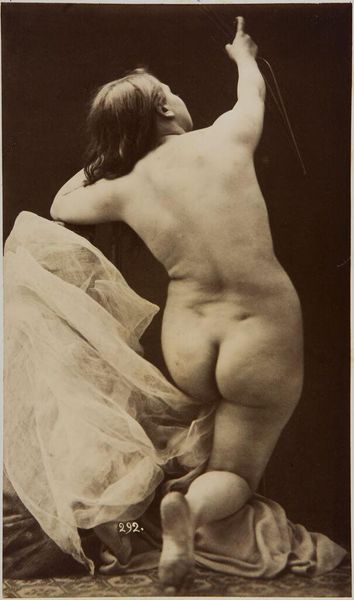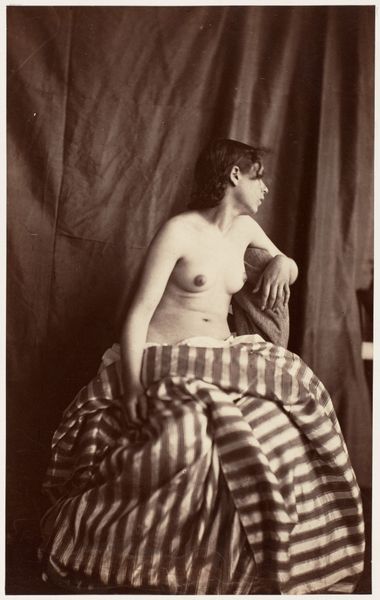![[Reclining Nude] by Julien Vallou de Villeneuve](/_next/image?url=https%3A%2F%2Fd2w8kbdekdi1gv.cloudfront.net%2FeyJidWNrZXQiOiAiYXJ0ZXJhLWltYWdlcy1idWNrZXQiLCAia2V5IjogImFydHdvcmtzL2Q3YTI0ZTY5LTc4NTctNDI3MS1iYTYyLWNhNjZlNmJiMTY4MC9kN2EyNGU2OS03ODU3LTQyNzEtYmE2Mi1jYTY2ZTZiYjE2ODBfZnVsbC5qcGciLCAiZWRpdHMiOiB7InJlc2l6ZSI6IHsid2lkdGgiOiAxOTIwLCAiaGVpZ2h0IjogMTkyMCwgImZpdCI6ICJpbnNpZGUifX19&w=3840&q=75)
Dimensions: Image: 4 13/16 × 6 5/16 in. (12.3 × 16.1 cm) Mount: 10 11/16 in. × 14 in. (27.2 × 35.5 cm)
Copyright: Public Domain
Curator: Ah, a quite stunning piece here from Julien Vallou de Villeneuve, taken between 1851 and 1853. The image, a gelatin-silver print, is titled simply "[Reclining Nude]." Editor: The grayscale lends it such a soft, almost dreamlike quality. The composition is quite classical, really, echoing centuries of reclining nudes in painting and sculpture. There is something almost melancholy about the draped fabric in the corner and the figure resting as though in thought. Curator: The very act of photographing the nude female form in the mid-19th century speaks volumes about evolving social mores and the role of photography in challenging established artistic conventions, don’t you agree? Editor: Absolutely, but I'm also struck by the contrast of the sharp photographic detail, like the texture of the skin, and the almost romantic haziness of the backdrop and shadows. It's a carefully constructed visual experience. The diagonal composition leads my eye from one point of texture and reflection to another. Curator: Photography provided a more ‘realistic’ depiction, a seeming slice of life, but it was just as curated as paintings. Its use for portraits was considered almost subversive by some at that time. How might that have impacted public reception and the early perception of photography as ‘art’ given images such as these? Editor: And that realism is compelling, though, isn't it? Notice the bracelet on her wrist. An ornament so precisely and purposefully placed, perhaps? It makes me think of artifice versus nature, the curated image fighting against the honest moment captured. This piece strikes me as having one foot in Romanticism and the other in realism with all the potential clashes that invites. Curator: I am interested by that notion and how we continue to renegotiate our place with that visual dialogue, in that visual push and pull with the camera in our culture, even today, generations beyond Villeneuve's time. I think we can agree his exploration provides an opening for that investigation and should still spur interesting discussions now. Editor: It truly does. Between the shadows and forms that are built up to suggest the pose, as well as the story of photographic possibility, it's hard to believe a mere "image" can hold this kind of gravity. Thank you.
Comments
No comments
Be the first to comment and join the conversation on the ultimate creative platform.

